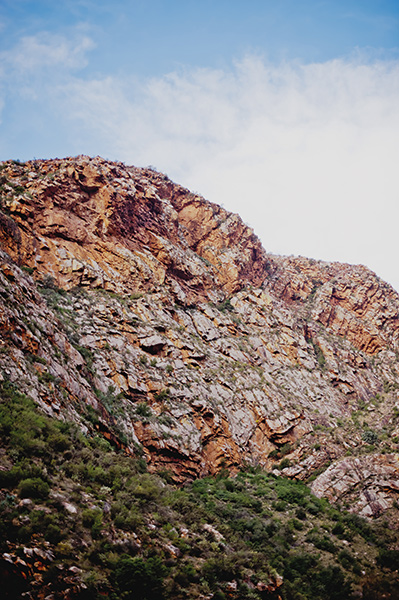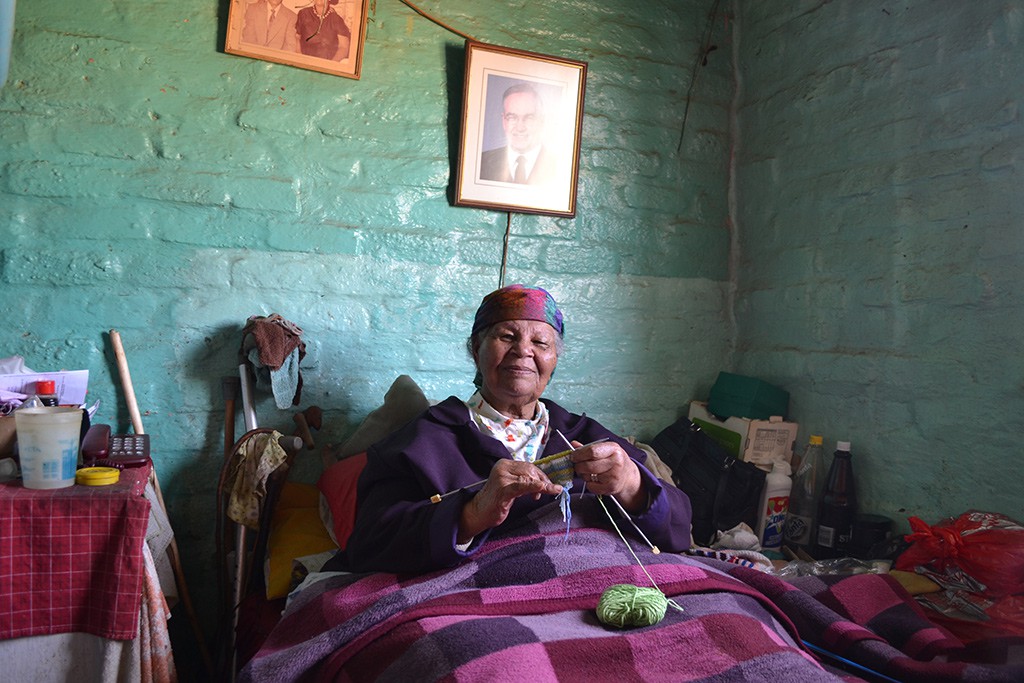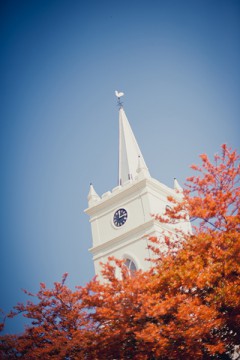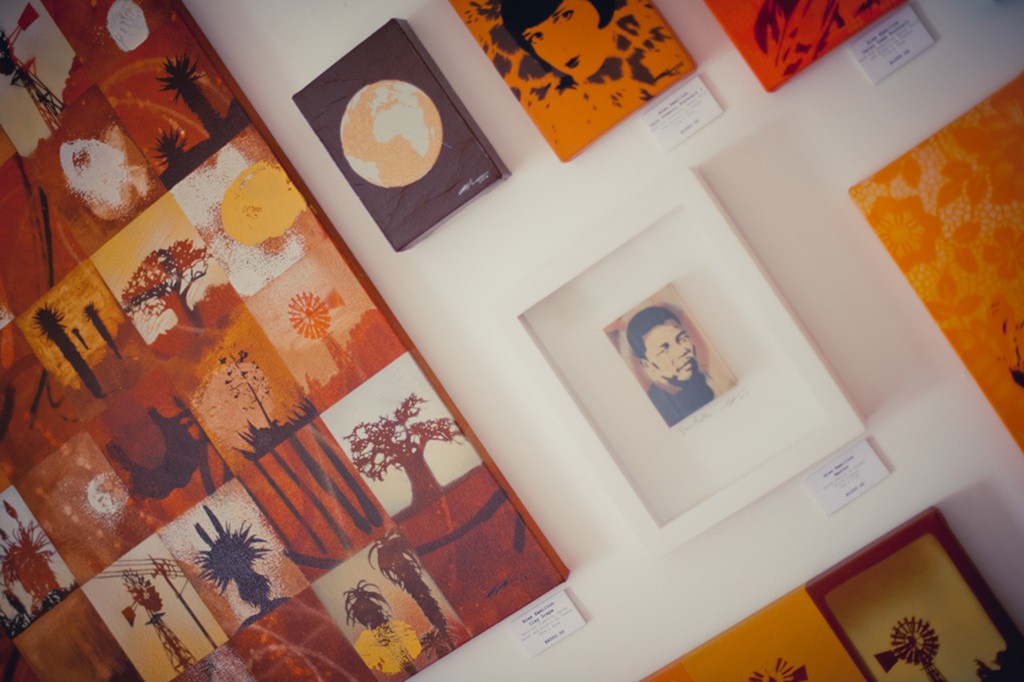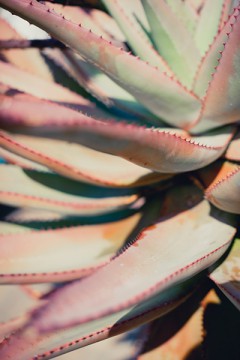Long a thriving farming town and a gem on the Karoo tourist trail, Prince Albert is adding new community voices to its more familiar Victorian history. By Toni Younghusband.

A new tourism initiative has brought added sparkle to Prince Albert’s many visitor attractions. Photo by Peter Delaney.
At the age of 104, Ouma Maggie wasn’t anticipating starting a career, especially not as the ‘poster girl’ for Prince Albert, but she’s adapted to her new role with a great deal of good-humoured enthusiasm. The star attraction of Prince Albert’s new cultural tourism route, it is Ouma Maggie’s job to help visitors bridge the gap between the town’s better-known white settlement and the coloured community that in the 1960s was forcibly removed from Rooikamp in the centre of the town to North End, a purpose-built township.
Ouma Maggie conducts business from her tiny bedroom, its teal-painted walls offering a backdrop as colourful as her stories. My concerns that she might feel exploited by the gawkers who crowd the room are brushed away.
‘This is an important job,’ she tells me earnestly. ‘I tell them what the town used to look like, where the shops were and how people lived.’
Virtually bedridden, she loves the company too.
‘I enjoy the conversation. I ask the foreigners just as many questions as they ask me. We laugh a lot.’
Though she never learnt to read or write, Ouma Maggie is a talented herbalist (she offers to fix my childlessness with one of her special concoctions) and a gifted storyteller, though don’t expect sugar coating: farm life was exceptionally tough on her sheep-shearer father and his children who were expected to plough and plant as four-year-olds.
As she tells stories about the farms, Prince Albert’s now stilled water mills, the old tobacco factory where young women earned extra money rolling tobacco leaves and the butcher who also sold bread, her daughter, 71-year-old Bettie, bakes roosterkoek for visitors on a braai grid in the dusty yard.
The next stop on the tour is a local tavern, then a nursery school, then back to ‘white’ Prince Albert to the few remaining buildings that were once part of Rooikamp. The cultural tour is the brainchild of local resident Anton Joubert, who has also developed the only integrated online booking system for a town in South Africa. At paonline.biz you can book and pay for accommodation, excursions and restaurants in the town before leaving home.
Though Prince Albert has a thriving tourist trade aided in part by its location at the foot of the magnificent Swartberg Pass and the preservation of its Victorian and Karoo-style architecture, residents like Anton and his wife Ellen are acutely aware of the need to keep the town’s heart beating. The Karoo is littered with towns dead and dying, crippled by the decline in agriculture.
‘Part of the secret to our success,’ says Ellen, ‘is that we are still a working farming community; the town has a very rural feel.’
It is also a town peopled with professors and experts in botany, anthropology, astronomy, gastronomy, art, filmmaking and photography who all contribute to the many enthralling tours and excursions the town has to offer. There are art, olive, book and film festivals; there is an R8 million theatre; there is a winter school for aspirant jewellers, artists, writers and chefs; and there are hundreds of acres of wide-open spaces to be explored by bike or on foot. Fresh produce is in abundance: export-quality figs, cheese, wine from four vineyards, extra virgin oil from three sizeable olive producers, and of course free-range Karoo lamb at prices so reasonable city folk have been known to ditch their luggage for an extra coolbox packed with chops.
While it has managed to retain its rural charm, Prince Albert has a level of sophistication that puts urbanites at ease. There are more than half-a-dozen quality restaurants and cafés, a wide range of accommodation options to suit all tastes and pockets and The Showroom Theatre attracts some of the country’s best-known performing artists.
This is partly because of the town’s residential profile: large numbers of professionals from Cape Town, Johannesburg, the Eastern Cape and the UK have set up home here and they’re not just retirees. The town’s private school, Prince Albert College, follows the Cambridge international curriculum and is prized for its maths and science results.
There is no denying the town’s natural attractions though, and it’s these that draw the largest number of visitors: such as the ancient leiwater channels that carry water from the mountains to the town’s gardens and orchards. Gay’s Dairy is a favourite; fill your own container with milk still warm from a Guernsey cow or get your children to help bottle-feed orphaned lambs.

Gay’s Dairy is renowned for its Guernsey milk and selection of cheeses. Photo by Jeanine Groenewald.
Climbers, hikers and cyclists head for the russet-coloured mountains, wine lovers catch sunsets from rock perches above the valley floor, and for the more adventurous there is the descent into the valley of Die Hel, a 150-year-old farming settlement formally named Gamkaskloof, virtually cut off from the world until the 1960s when a steep switchback road was carved into the Swartberg.
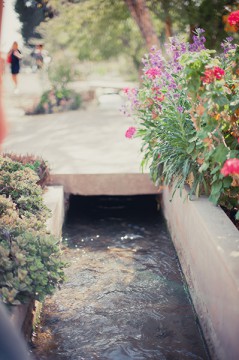
Ancient leiwater channels carry water from the Swartberg mountains to the town. Photo by Jeanine Groenewald.
This article originally appeared in the October 2014 issue of Getaway Magazine.














